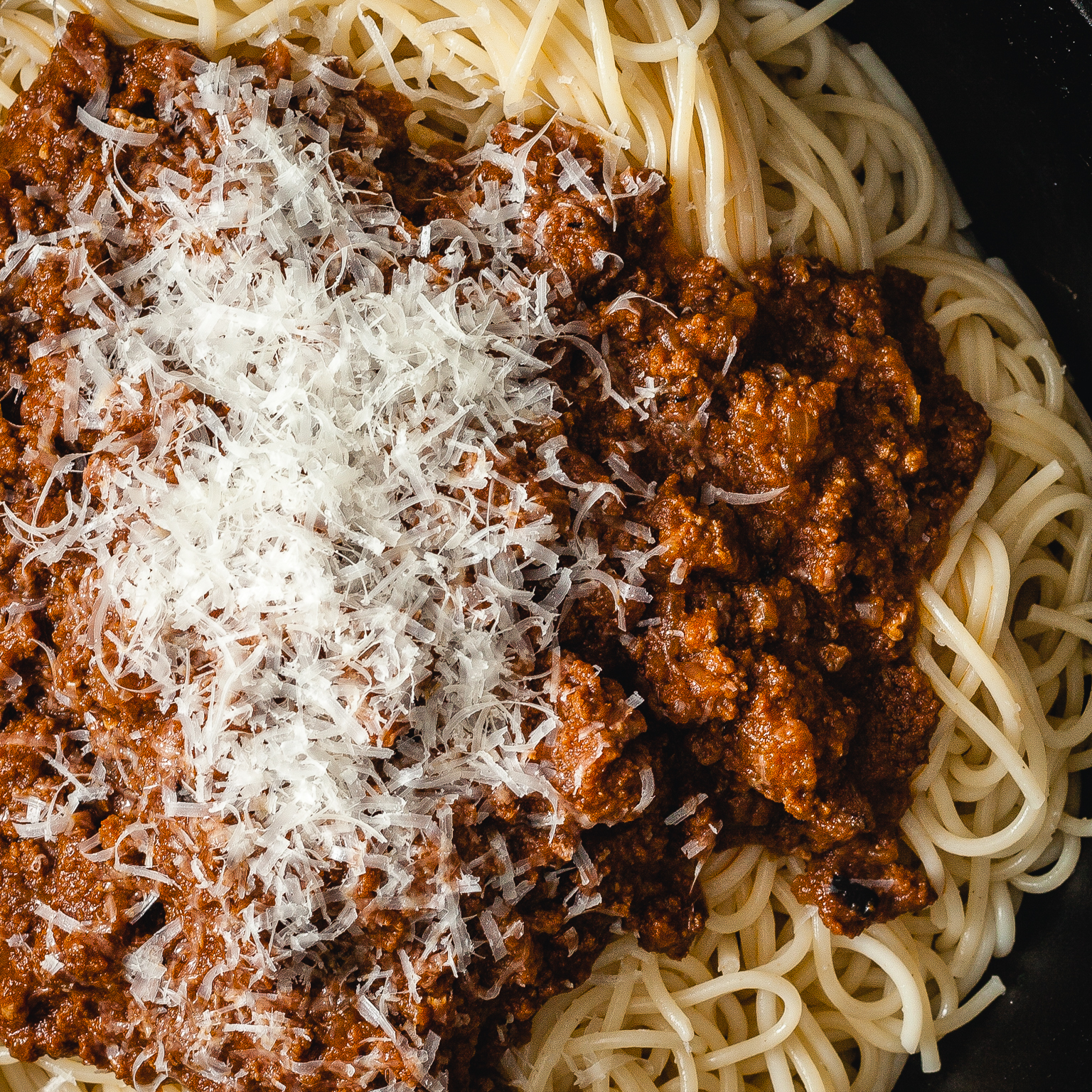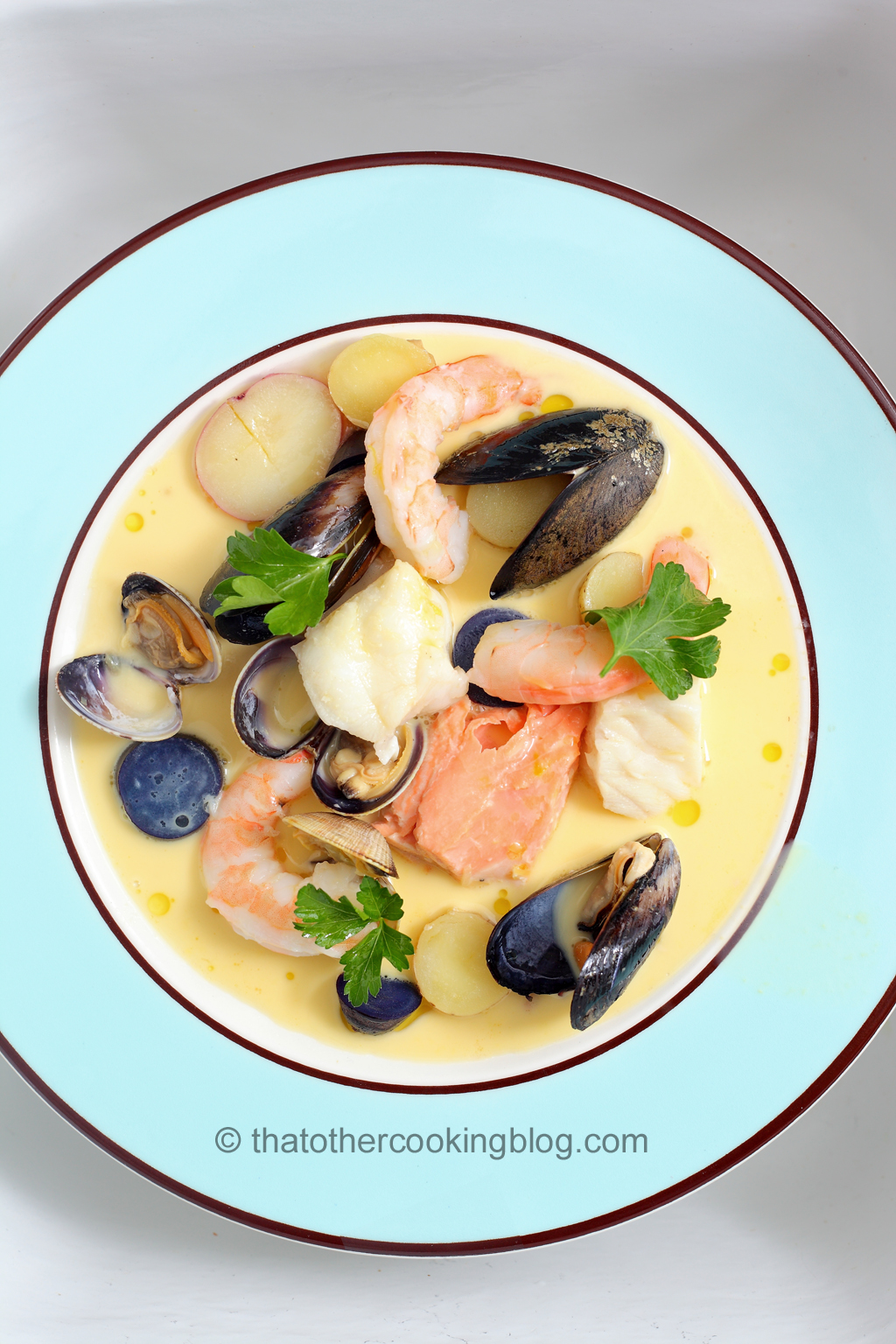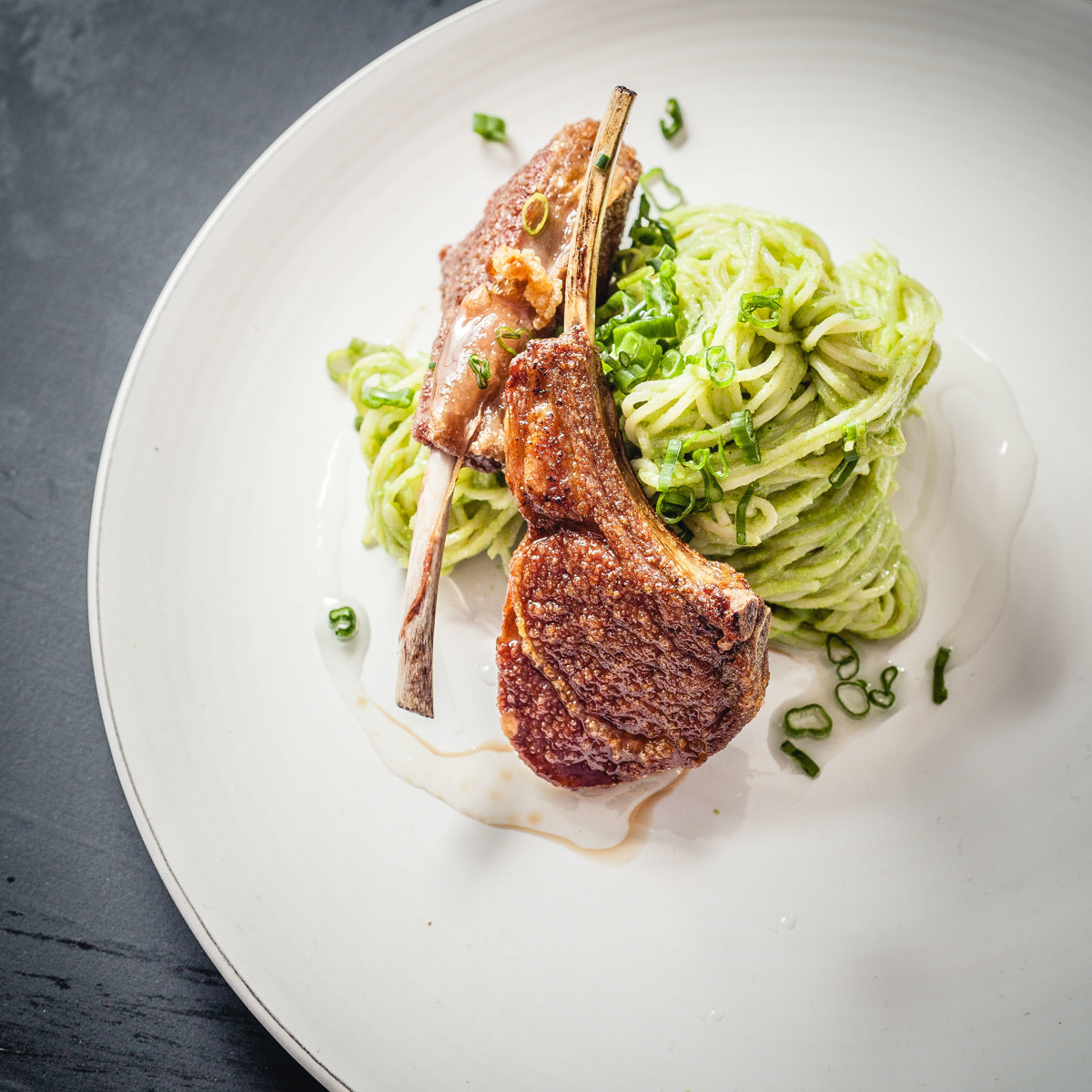If you know or you know of somebody that holds the true original recipe for bolognese sauce please report back in the comment section if you can. I’m really curious. A simple google search returned over 200,000 result and after checking the first 2 pages of results it was obvious everybody has their own idea of what an authentic bolognese ragu should be. There are obviously the usual suspects in the ingredients list which I tried to keep in mind but seriously, cooking by most common denominator ingredients is plain boring, at least to me.
The absolutely required ingredients in bolognese ragu.
hmm…. meat? I think that’s mainly it. Which kind? well… in today’s world beef because it’s easier to find although historically veal is probably more proper. Pancetta can also be found in pretty much all the recipes I looked at. Then we have the aromatics like onion, celery and carrots. Carrots being fairly popular and onions being in pretty much all the recipes. Wine? hit or miss really. Milk? yep… another one that is popular but not standard. Garlic for sure. Nutmeg… yep. I think nutmeg is probably the only spice being added to this sauce in modern times. No bay leaves apparently. Pork? yep, it does appear but not consistently. Stock? yep… here and there although I should say.. if I can avoid it I will refrain from using stock unless absolutely necessary in a recipe.
Why would you refrain from using stock in recipes?
You can render stock from the ingredient in your recipe to begin with. The whole idea behind paella or chicken soup for example in which the stock is rendered directly from the ingredients used in it. Sure, using stock is very helpful and helps in adding flavor, but the step can be skipped and if you know your way around developing flavour by browning and reducing, your sauce will end up being amazing if not superior to one where extra stock was used. I also don’t like the idea of adding store bought stock just because I have no control of how that stock tastes. I tend to rely on stocks I make myself, which are very low on sodium. Perfect for freak-control cooking. I like cooking in which nothing goes to waste.

But what about tomatoes!?
Ok… most of us are wondering about tomatoes. To tell you the truth I don’t think they are necessary or even an ingredient in the very original tuscan recipe. Tomatoes came from south america and made it to Italy probably around the 1500s. So if you asked me… I’d say the very original bolognese ragu recipe probably didn’t have them but tomatoes are SO GOOD! I’ll keep tomatoes in my bolognese recipe… sorry purists out there, I can’t help it. Peruvian tomatoes in Italian dishes just makes sense.
What’s this Christmas twist all about?
Ok, let’s not get all hung up on this post title. Let’s not examine it too closely either or otherwise it could be easily invalidated but Christmas time is around the corner and for us (people living in the americas) it’s all about the spices. Cloves, cinnamon, nutmeg, star anise. These aromas define end of year holidays for a lot of people. It’s worth mentioning that these aromas are pretty common in other cuisines all year round as well. Chinese and vietnamese for example. Five spice? Pho seasoning? It’s Christmas all day every day for some! I guess what I’m saying is that we shouldn’t restrict the use of spices to times of the year. I mean, you can find all of these any day.
More on Christmas spices and why we use them.
Ok, I have no idea. At some point between 1700BC and today american countries decided to incorporate these spices which are original from Indonesia, India and Vietnam into the holiday menu. It’s pretty wild because these spices are also available all year round but hey determine the true scent of Christmas season for a huge group of people, me included. This is how I grew up. As a kid living in Venezuela I wouldn’t see a clove or a stick of cinnamon until December was around the corner. In the US this is less drastic and at least cinnamon is featured very frequently throughout the year. Thank god.

To brown or not to brown the meat.
Ah! one of my favorite subjects. Maillard reaction. This reaction is responsible for modifying flavor and turning good things into delicious things. Sous vide cooks out there are pretty familiar with this concept. After having cooked a piece of meat for 48 our inside a plastic bag, the only way to turn what’s already great into amazing is by searing the crap out of it. That golden brown crust that forms contains a layer of flavor that is unbeatable.
So should I brown the meat or not??
Should you brown the meat that goes into a meat sauce? Really up to you. I have experimented enough and have concluded the gain is not worth the extra work. And there’s also a downside to browning ground beef specifically. The browned meat which is obviously overcooked meat looses it’s ability to retain liquid. The more browning the more brittle the sauce will end up being. I prefer to allow the browning happen naturally as the sauce cooks away hours and hours. Believe me, it will brown, but very slowly.
What about pressure cooking?
To make things easier, I fully rely on my pressure cooker for this kind of job. It will cut down the cooking time by half. It will also reduce the amount of flavor loss due to evaporation and it will speed up the maillard reaction everybody loves. So, instead of standing by the pot for 3 hours, stirring occasionally, adding more stock or water overtime, you can can just chill for 1.5 hours and do other stuff. I love pressure cooking.

How to make christmas bolognese.
Ingredients:
2 pound of ground beef
2 ounces of pancetta or unsmoked bacon. Cubed small.
1 28oz can of tomatoes.
1 white or yellow onion small dice.
3-4 fresh oregano sprigs.
6 garlic cloves. Peeled. Woody bit cut off.
1 Tbsp fish sauce.
2-4 cloves
1 tsp brown sugar.
1/2 stick of cinnamon.
1-2 star anise pods
1/4 tsp nutmeg.
1/2 Tbsp vegetable oil.
1-2 Tbsp EVOO
1/2 cup of heavy cream.
1/2 cup of grated parmigiano reggiano.
salt and pepper to taste.
Directions:
- First, get everything ready. In your pressure cooker vessel, sauté the pancetta/bacon over medium heat, making sure the fat is rendered and the pork has browned nicely. Add the onions. And the vegetable oil. Let the onions brown a bit, if some of it burns, it’s actually not a bad thing but don’t go burning the whole content of the pot. 1 or 2 percent of it max.
- While the onions cook. Get your blender. Add the tomatoes, the garlic and the oregano sprigs (yeah, the whole sprig) and pinch of salt. Blend until liquified. Add the raw tomato sauce to the pressure cooker pot. Add another pinch of salt here.
- Lower the heat to a simmer and reduce the tomato sauce until the bottom starts to almost burn. Tomatoes almost turn black and the flavour at this stage is amazing. Make sure you have wooden spatula to scrape the bottom of the pot to release the sticky bits. Do this until the tomato sauce takes on a very deep dark red colour. Takes about 20 minutes.
- Add a cup of water or dry white wine if you’re feeling fancy and add the meat and the rest of the ingredients, except for the EVOO.
- Pressure cook for 1 and a half hours at 15psi.
- Depressurize and return to the stove. Reduce until the consistency has body. We don’t want a watery sauce or too creamy. It has to have body. Add the EVOO and half the cup of cheese.
- Adjust the seasoning to your liking. Safe the rest of the cheese to garnish each serving.
- Make the pasta following the package instructions or if you want a cooler way of cooking your pasta following my cooking tip on reconstituting dry pasta.
Last few thoughts on this recipe.
If you don’t have a pressure cooker, don’t panic. Just follow the same directions but double your cooking time.
Note how I left the celery and carrots out of it. It was intentional for the sake of simplification but if you really like, those could be added back. If you do add the carrots, you should take out the sugar.
There’s nothing traditional about this recipe so for those out there seeking true Italian cooking I apologize. My blog is about cooking not about traditional cooking.
Should I have called this something other than bolognese ragu? Hmm… possibly, but I believe the spirit of bologna’s sauce still there! Only one way to find out! Please let me know in the comment section!

Wanna get more sous-vide cooking guides and cool cooking how-to’s in your mailbox? You know what needs to be done!
We never spam. You should only be getting updates when new content is posted on the site. We also respect your privacy. We don’t share your email address with anyone and you can unsubscribe anytime!




12 comments
I have another one to add to your discussion. I don’t use carrots in my bolognese and never will, but I have met some people that insist that carrots are a must in a bolognese ragú, that it contributes to it’s distinctive taste etc…
Great post and beautiful pics as always. Have a great week! 🙂
Thanks Sofia! I have used carrots in the past. I would like to run a comparison test and see which one I like better. I know carrot would provide the needed sweetness to cut some of the acidity in the tomatoes but then again.. some tomatoes are sweet enough and don’t need help. I guess it’s all relative isn’t it?
I agree with you on the browning. Have you ever added liver to bolognese? I had it once and it was spectacular! Beautiful feature photo!
thanks Mimi! To answer your question, I haven’t but I don’t see why it wouldn’t be a delicious addition! When do you add it?
Hi Paul,
There is lots to say about this.
First of all, there is a recipe that has been registered with the chamber of commerce in Bologna as the official bolognese recipe in the 80ies:
http://www.accademiaitalianacucina.it/it/content/ragù-alla-bolognese
Your comment about Tuscany is quite funny, as the city of Bologna where the ragù originates is not in Tuscany but in Emilia romagna.
Many of the statements you make apply to ragù (meat sauce for pasta) in general, but not to the specific ragù that is called Bolognese (from Bologna). To be such that a person from Bologna would recognize it, it has to have tomato,milk, carrots, and celery. It should not have garlic. Not any ragù has fish sauce, but you knew that.
Ragù without tomatoes does exist, but would be called Ragù Bianco.
The ‘xmas’ spices are used year-round in sweet preparations in many European countries. (But of course never in ragù in Bologna, not even with xmas.)
As Bolognese is the most famous ragù it is not strange that it has become the generic name internationally, but from an Italian point of view it would be more correct to just call it “ragù” if it is not the one from Bologna.
I would call your recipe “Ragù Speziato”.
I agree with you on the browning.
As for pressure cooking, I have published a side by side experiment on my blog. The flavor was a bit less complex and the meat was slightly less tender. Most notably the tomato was slightly more acidic and slightly less sweet. I believe the lower and slower cooking of the tradiotional method does a better job of developing the tomato flavor.
https://stefangourmet.com/2016/01/04/ragu-alla-bolognese-pressure-cooked-sous-vide-or-traditional/
Hi Stefan! it’s been a while! I corrected the wrongful mention of tuscany in the post, so thanks for that! I hope you’re doing well!
Hi Paul, it seems that we have been ‘out of sync’. I wasn’t able to keep up very well with blog posts when I was traveling in September, and you’ve been posting less since I’ve been back. I’m going to check out your September posts and would love to ‘see’ you comment on some of my posts as well.
hey Stefan! copy that. Yeah, I have definitely slowed down. It’s hard to find the time. I need to streamline the process for posting. Takes me too long and as you know… I hardly even proof my posts… they go out with all kinds of errors because I do this at midnight when I have a moment 🙂
Hi, I just discovered your blog and IG feed..love your photos. I’m a Brit living in Italy. Even in Italy there are many versions of this recipe but most Italians use a mix of minced pork and beef for bolognese. In fact most supermarkets here in Northern Italy sell the two meats ready ground and mixed together. Ragu means meat sauce and their are many types of meat sauce but Bolognese which comes from Emilia Romagna (Bologna = Bolognese!) also often includes mortadella ( a large sausage from the same area), pancetta, carrots, celery, onions and always tomatoes and a glass of red wine. Not usually garlic or cream, sometimes milk which is supposed to help lessen the acidity of the tomatoes although my Italian husband never adds it.
Hi Jacqueline and thank you! Yeah, I just fixed the incorrect reference to tuscany… freudian slip… of sorts? hahah. I usually make this ragu using pork but I didn’t have any. I didn’t know about that mortadella addition… I’m pretty familiar with it, it’s super popular in Venezuela… it’s cheap too! I love garlic and will probably always add it to a recipe even if it goes against the “rules” I also skip milk when making bolognese. I rather add sugar to balance acidity. Milk or cream just … well, I like this ragu as dark a possible. Thanks for stopping by!!!!
Great photos as usual, Paul. While certainly not the traditional version of the Emilia-Romagna region of Italy where Bolognese originated, I’m sure your ràgu (which I’m sure most Italians would call this) was delicious. It will certainly create the aromas of Christmas in the kitchen while it cooks. 🙂
it’s been a while! I hope you’re doing great Karen! thanks for stopping by and for your lovely comment!!! yeah, the name is technically not correct! Wish I could change it but that means breaking the URL that’s already indexed by google and that’s a pain to fix 🙁